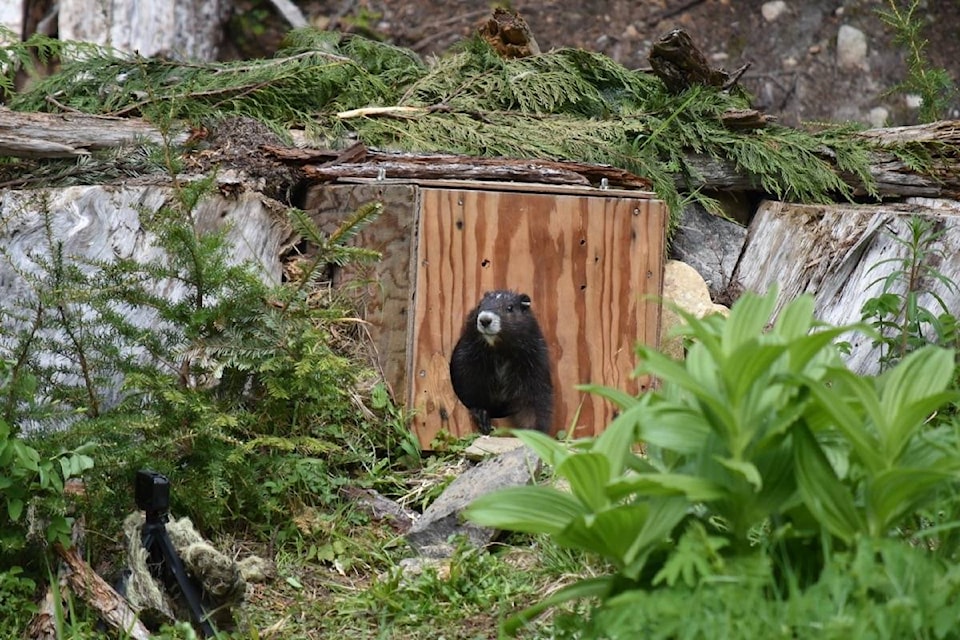As they approach hibernation, a once nearly-extinct species native to Vancouver Island is about to settle down for what was a relatively good year.
The Vancouver Island Marmot population has been recovering since the species nearly went extinct in the early 2000s, but thanks to The Vancouver Island Marmot Recovery Foundation, their population has risen, particularly with 106 pups born within the past two years, said Adam Taylor, the foundation’s executive director.
“It’s been a pretty good year. We were expecting an increase in the number of pups produced but we’ve had a really strong past two years.”
In 2019, the foundation counted 60 pups; this year, it reached 46.
VIMRF works with the Toronto and Calgary zoos for their captive-breeding programs in addition to their facility on Mount Washington. Taylor explained they really want to reinvigorate the program to see the population begin a more rapid recovery.
This year, they released 14 marmots into the wild from the program and three were translocated to enhance other colonies.
RELATED: Vancouver Island marmot populations gets boost with help from Calgary Zoo
“We’ve got a fair amount of capacity to release them. Within a few hours, the young marmots start interacting with the freshly-released ones.”
Following releases this summer and monitoring pups, Taylor said the team will spend the winter reviewing camera footage and acoustic recordings. For certain colonies that are only accessible by helicopter, the footage gives researchers a deeper knowledge of the marmots in those colonies.
With the acoustic recordings, the team monitors the marmot’s individual sounds - similar to voices, Taylor explained. The information is then used to create a report to develop and identify sites for future releases.
Another good sign for the species’ recovery is their resilience; between a wildfire near one colony in the Nanaimo Lakes region, a wet summer and heavy smoke from U.S. wildfires in the area, Taylor said he was happy how little the marmots were fazed.
“The speed at which they can adapt is amazing. We’re feeling really happy with what was a strange, strange summer - it was definitely one for the record books.”
Taylor credited their donors for truly saving the species.
“They literally would be extinct without support from people in B.C. and across Canada. If you take a look at the Vancouver Island wolverine, they are probably extinct now. Support worked for this species, and they were saved; what a difference that makes.”
For more information about the Vancouver Island Marmot and the foundation, visit marmots.org.
photos@comoxvalleyrecord.com
Like us on Facebook and follow us on Twitter



